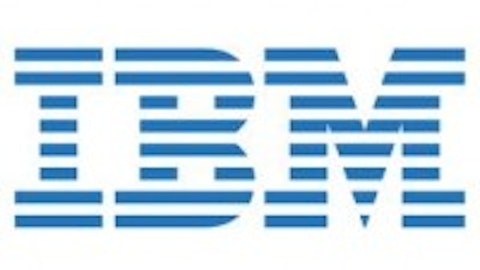Oracle claims that the lower sales of its M-series was due to customers waiting it out for the next generation of servers, built on its SPARC T5 microprocessor, and its upgraded M5 servers. Meanwhile, ZFS storage sales posted a double-digit gain.
To offset these losses, Oracle Corporation (NASDAQ:ORCL) has been steadily moving away from these server products and focusing on “engineered systems”, which combine hardware and specialized software in a single package. Demand for these new engineered systems, such as Exadata, Exalogic and Exalytics, has been brisk over the quarter, posting 30% sequential growth in unit bookings. During the quarter, Oracle sold over 800 engineered systems to a wide range of customers, including Dow Chemical and Office Depot.
Expenses and Margins
Investors have been increasingly concerned with rising expenses and declining margins at Oracle, due to the transition to cloud-based services and its poorly performing hardware business. During the quarter, total operating expenses rose 10 basis points to 55.3%. Meanwhile, operating margin was flat from the previous year at 44.7%.
Overall, expenses and margins appeared under control during the third quarter, a continuation of a longer term trend over the past three years since the Sun acquisition.
Therefore, although Oracle is having some short-term problems with meeting growth expectations, the company has bounced back from the Sun acquisition fairly strongly. Its cash position has risen, free cash flow is being efficiently used, margins are rising and expenses are flat – all positive long-term catalysts for growth.
The Bottom Line
In the enterprise business, Oracle Corporation (NASDAQ:ORCL) competes with the heavyweights of the IT industry – International Business Machines Corp. (NYSE:IBM), SAP AG (ADR) (NYSE:SAP) and its former ally Hewlett-Packard Company (NYSE:HPQ). How does Oracle stack up fundamentally against these peers?
| Forward P/E | Price to Sales (ttm) | Return on Equity (ttm) | Debt to Equity | Profit Margin | Qty. EPS Growth (y-o-y) | Qty.Revenue Growth (y-o-y) | Div. Yield % | |
| Oracle | 10.91 | 4.12 | 24.29% | 45.11 | 28.46% | 0.20% | -0.90% | 0.80% |
| Hewlett-Packard | 6.45 | 0.37 | -41.00% | 121.28 | 10.86% | -16.10% | -5.60% | 2.30% |
| IBM | 11.49 | 2.26 | 84.67% | 175.25 | 15.89% | 6.20% | -0.60% | 1.60% |
| SAP | 20.26 | 20.26 | 21.03% | 37.02 | 17.42% | -7.80% | 11.60% | 0.90% |
| Advantage | HP | HP | IBM | SAP | Oracle | IBM | SAP | HP |
Source: Yahoo Finance, 3/25/2013
Since each company has a slightly different approach to database management and enterprise software, the results are mixed. While HP is the cheapest stock fundamentally, the headwinds it faces in the personal computers business are too strong to ignore. SAP is the most expensive fundamentally, which could be justified by its higher revenue growth, lower debt levels, and robust margins. Meanwhile, IBM is the most stable, but its fundamentals don’t point to explosive growth down the road.
Oracle has one key strength – its margins, which are extremely important in the tech world. Tech companies often get ahead of themselves with revenue growth while completely neglecting margins and profits. Although Oracle Corporation (NASDAQ:ORCL)’s top and bottom lines are likely to remain under pressure in the coming year, I believe that its long-term transition will pay off in the end. The company’s operational efficiency is clear with its tight control of expenses and tight use of cash. Therefore, Oracle is a sound long-term investment – as long as you don’t expect it to double overnight.
The article Stop Worrying About This Tech Titan! originally appeared on Fool.com and is written by Leo Sun.
Copyright © 1995 – 2013 The Motley Fool, LLC. All rights reserved. The Motley Fool has a disclosure policy.


